Pimms Sandwich
The weather is as British as ever; so have some ice cream.
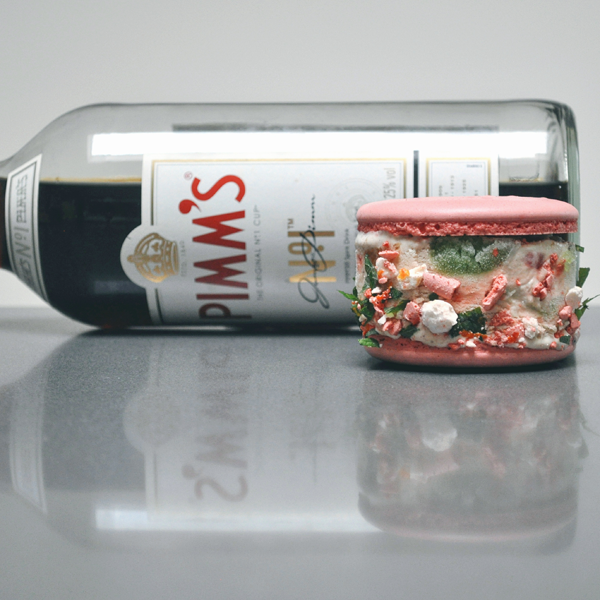
Ah, British Summer. Rain, wind, stifling heat, mixed with the odd day of glorious sunshine. As my Father (who still professes to have just stepped off a plane despite having lived here for 50 years) succinctly puts it - Britain has four seasons; Winter, Winter, Winter and Winter.
One thing's for sure; I wasn't risking a barbeque this weekend. Instead, it was Beef Wellington & bone marrow gravy for main, and these ice cream macaron for dessert.
They are a combination of a cucumber & gin sorbet, soft Pimms and mint jellies, roasted strawberry ice cream and crunchy meringue pieces. Roasting the strawberries not only intensifies the flavour, it also reduces the liquid content so that the ice cream can still set but give off a good strawberry kick.
There are quite a few processes, so I've tried to lay them out in an order that will allow some overlap during wait periods. It's a lot of effort - but if you're into your ice cream macs, and rainy days, you'll love these.
Ingredients (makes 8 individual macs with a couple of shells left over for the chef)
For the Pimms & mint jellies
- 3 Gelatine leaves
- 100g Caster Sugar
- 125g No. 1 Cup
- 25g fresh Mint leaves
- 10g Liquid Glucose
- 200g Water
- 100g Soda Water
For the roasted strawberries
- 250g strawberries (weighed as hulled)
- 1tbsp Balsamic Vinegar (sweet aged if you have)
- 1tbsp Golden Syrup
- 2 twists of black pepper
For the macerated strawberries
- 100g chopped strawberries
- 10g caster sugar
- 20g Pimms No. 1
For the cucumber & gin sorbet
- 2 large cucumbers, skin on
- 2 lemons
- 120g Icing Sugar
- 30g London Dry Gin
For the macaron shells
- 150g Ground almonds
- 150g Icing sugar
- 110g Egg whites
- 150g Caster sugar
- 37ml Water
- 3g Red powdered food colouring (Americolor)
For the roasted strawberry ice cream
- 100g puree (from the roasted strawberries)
- 150ml Whole Milk
- 150g Caster Sugar
- 5 egg yolks
- 1tsp Vanilla Powder
- 500g Double Cream
- 20g Pimms No. 1 Cup
For the meringues
- 2 Large Egg Whites
- 65g Icing Sugar
- 65g Caster Sugar
- 2g Red powdered food colouring (Americolor) - optional; you can just leave them white!
For the roll coating
- Freshly grated peel of two large oranges
- 10g Mint leaves
- Reserved meringues
Equipment required
- 8cm circular cutter
- Ice Cream machine
- Stand mixer
- Thermometer
- Plastic piping bag and large piping head
Turn your Ice Cream maker on to start chilling, and pre-heat your oven to 190 degrees C.
If you have a double oven, pre-heat the other one on to 140 degrees C.
Make the jellies
Put the gelatine sheets into some cold water to soften.
Weigh out your 200g of normal water into a heavy bottomed pot, pour in the sugar and liquid glucose. Bring this to the boil over a medium-high heat, and hold it there for 5 minutes.
Take the pot off the heat, and let it cool to around 60 degrees C. Take the mint, finely chop, then add to the heated liquid. Don't be tempted to add the mint while it's too hot, or you'll end up with mint tea. Nobody wants that.
While the liquid is still warm, squeeze off the excess water from the gelatine then add that to the pot and mix thoroughly. Finally, pour in the Pimms No. 1, the soda water and mix well.
Take a tin - something like a square brownie tin - and line it with two sheets of cling film so it covers all sides. Pour in the liquid, then leave to set in the fridge for an hour or so.
Roast the strawberries
Put the hulled strawberries on a silicone mat. Twist over the black pepper, then pour on the balsamic vinegar and golden syrup.
Put the mat into a tall-sided tray then put it in your oven, pre-heated to 190 degrees C, and roast for 40 minutes. Give them a turn at 20 minutes just to make sure all the sides are roasting evenly.
When time's up, remove from the oven and let cool slightly - don't leave them for long or you might end up with a solid block. Put them in your food processor or blender, and whizz until you have a puree. Reserve 100g for the ice cream.
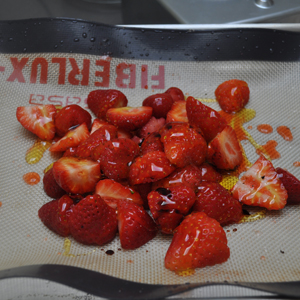
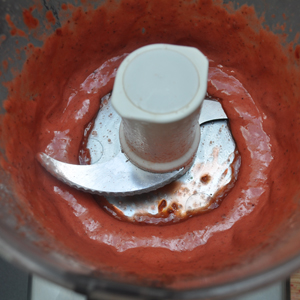
Make the macerated strawberries
This is the easy bit; place the chopped strawberries in a bowl, cover with sugar, pour in the Pimms and mix with a spoon to combine. Leave at room temperature for the rest of the time it takes you to complete the recipe.
Make the cucumber and gin sorbet
Split the two cucumbers down the middle, then use a teaspoon to scrape out the seeds from the middle. Roughly chop, leaving the skin on, and put into a food processor or blender.
Weigh in the Icing Sugar, and finally squeeze the juice of two lemons into the food processor's bowl.
Blend this for 10 minutes, to try and extract as much flavour as possible.
When time's up, use a fine sieve and pour the puree through so that you're left with only the liquid. Mix in the gin.
Pour the mix into the Ice Cream maker bowl, and churn until you have a sorbet. When it's ready, transfer to a disposable piping bag and reserve in the freezer.
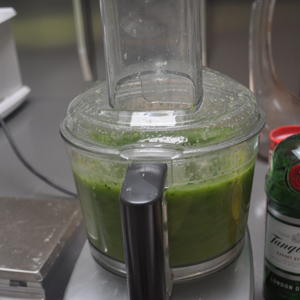
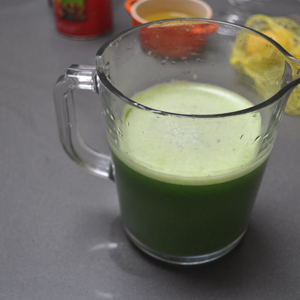
Make the macaron shells
I'm going to be lazy here - please follow my instructions for making macaron shells here, here or here.
Once you get to the piping stage, remember that these need to be bigger than your standard macaron shells. We want the end size to be around 8cm - so I'd say pipe to about 4cm and then tap to spread.
Once the shells have baked, set aside to cool and turn the oven down from 140 degrees C to 110 degrees C.
Make the meringues
Beat the egg whites in your stand mixer until soft peaks form - normally less than a minute on a Kitchen Aid up at full whack. Slowly shower in the caster sugar, then leave it running on high for about 10 minutes until you have stiff peaks.
Turn the mixer down to low. If using, sprinkle in the powdered colouring, followed by the icing sugar. Give it a quick 30 seconds on high, then turn off and transfer to a piping bag.
Take a baking tray, and place a silicone mat on top. Pipe any shapes you like - we're just going to crush them - but make sure they are reasonably small so we get a good amount of crunchy shell rather than sticky innards.
Place in the pre-heated 110 degrees C oven, then cook for 60 minutes.
When done, remove and allow to cool before crushing roughly.
Make the roasted strawberry ice cream
Place the 150g of milk in a heavy bottomed saucepan, add the caster sugar and vanilla powder. Measure out 500g of double cream (fridge-cold) into a bowl, and put a sieve on top. Place the egg yolks into another bowl and whisk for 30 seconds. Pour the 100g of puree into a second saucepan (so that it's warm too and doesn't split the mix).
Gently heat both the milk and the puree. When the milk comes to the boil, temper the eggs by pouring a little over them while constantly whisking. Pour a little more, then whisk again. Repeat until all the milk has been combined with the egg yolks, then pour the lot back into the saucepan.
Keep heating over a low heat, stiring with a wooden spoon. Eventually, it will slightly thicken - just so that when you run your finger down the spoon, it will leave a trace. When it reaches this point, turn off the heat and pour in the warmed puree. Stir again to combine, then pour through the sieve into the cold cream.
Mix again, much more vigorously this time. When everything looks mixed nicely, pour directly into the pre-chilled ice cream maker and churn. There's no need for any of this "put the mix in the freezer for 24 hours before churning" nonsense; there never is.
Sieve the liquid off the macerated strawberries - which is now a nice sugary Pimms flavour - and drop this into the ice cream bowl too. Finally, weigh out your final 35g of Pimms and pour it in.
After 30 minutes to an hour, just before it completely churns, drop in the macerated strawberries, and about half of your crushed meringues.
At this point remove your cucumber sorbet from the freezer to warm up a little.
Setting the components
Nearly there!
Now that your ice cream has churned, line a tin or try tray that's around an inch or so tall with cling film. Use a spatula to transfer the ice cream in.
Next, pipe 3 even lines of cucumber sorbet into the ice cream so that they run the length of the tray.
Take your set jellies out of the fridge and roughly chop about half. Press the pieces into the soft ice cream, around the cucumber.
Cover with another layer of cling film, then put back in the freezer.
Putting it together
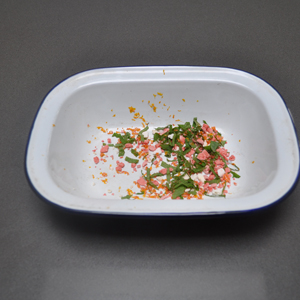
Chop the mint into ribbons, and grate the oranges into a bowl. Crush up some of the meringues.
Remove the tray of set ice cream from the freezer, and cut 8 circles out, trying to get a line of cucumber sorbet inside each one.
Working quickly (it's a soft ice cream!) put a toothpick or fork in the top of each cut circle, then roll the edges in the mint-orange-meringue mix to coat. Place onto a macaron shell, then cover with a second shell. Place back in the freezer immediately and repeat with the remaining 7 ice creams.
When you're ready to serve, remove from the fridge for 10 minutes then scoff. Perhaps with a glass of Pimms. Or even better, straight gin; you might need it after all that work.
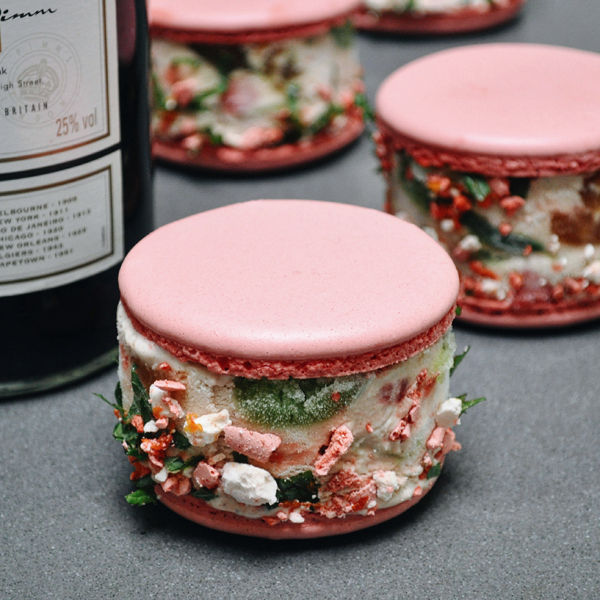
Jasmine Tea Macaron
Using tea from an old friend's new tea company
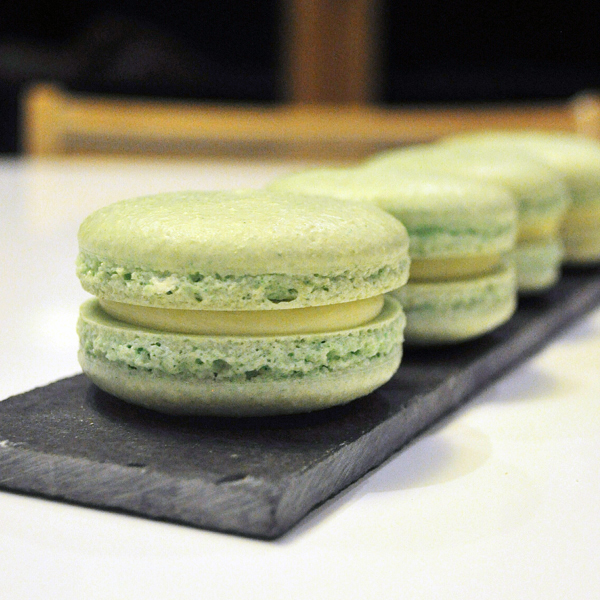
Last year I was invited to a tea tasting by Sammy, an old friend from junior school who I've known for 26 years. He moved to Hong Kong to teach many years ago, in the interim years married Jessi, and the pair of them travelled throughout Asia tasting and researching tea. They decided to start a company exporting the best teas they'd found - and this was the birth of Man Cha.
The Man Cha pearls are one of the best Jasmine teas the wife and I have ever tasted and, as soon as I did, I knew what needed to be done with it; a Jasmine Macaron.
Sam and Jessi's first venture is a series of pop-up market stalls to promote their new brand. They've asked me to make some of these macaron each week for the short period that the market stall is open, and this recipe has been tweaked a few times due to the extremely changeable weather we've been having recently. In the end, I opted for butter to stabilise the filling; it takes the edge off the white chocolate's sweetness, and brings the Jasmine flavour forward. I found the chocolate brand with the best flavour match to the tea was Callebaut, but it will work well with any.
Catch Mancha's last market appearances on Saturday 20th September at Netil Market (home of the legendary Bao bar and Lucky Chip van), then on the 21st at Backyard Market E1 near Brick Lane. Come down and grab a box or two for yourself, then try this recipe (and maybe save a bit for drinking!).
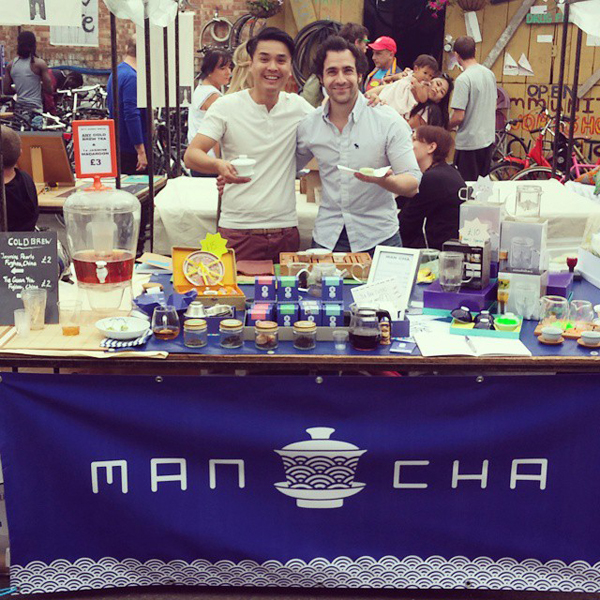
Ingredients (makes 12 to 15)
For the filling
- 170g Whipping cream
- 160g Callebaut's Finest Belgian White Chocolate (or equivalent) [Buy]
- 12.5g unsalted butter
- 12.5g Jasmine tea pearls
For the macaron shells
- 150g Ground almonds
- 150g Icing sugar
- 110g Egg whites
- 150g Caster sugar
- 37ml Water
- 2g Green powdered food colouring (Americolor) [Buy]
Equipment required
- Food processor
- Stand mixer
- Thermometer
- 2 baking mats (Fibrelux or Silpat if possible)
- 2 heavy trays
- 2 disposable piping bags and a 1cm nozzle
Jasmine Tea filling
Make the filling first, as it needs time to thicken. It's important to prepare ahead or you run the risk of over-infusing the tea. Weigh 12.5g of Jasmine tea and place in a bowl big enough to take that and the amount of cream. Pour 160g of whipping cream into a pot, and weigh 160g of white chocolate callets into a second bowl (or, if using bars, chop your chocolate finely). Place a sieve over the chocolate, set up a timer for 3 minutes, and place your thermometer into the pot of cream.
Now gently heat the cream; as soon as it reaches 85 degrees centigrade, immediately pour it over the jasmine tea and start the 3 minute timer. During the infusion time, agitate the tea with a spoon from time to time. When three minutes are up, immediately pour the infused cream into the sieve, letting it pour over the chocolate. Remove the sieve and let it sit like this for 30 seconds. Now add the softened butter and mix with a spatula to combine. If you have a stick blender, use it to blend any un-melted ingredients in the bowl, and make it as smooth as you can.
When you're happy with the consistency, pour the mix into a wide tray and cover the surface with cling film. Place in your freezer for 1 hour, then move to the fridge for at least 3 hours.
Macaron shells
This recipe uses the Italian meringue technique by Pierre Hermé to make the shells, with a few tweaks to get more consistent results at home.
Again start by preparing everything - have your baking mats on some heavy trays, get out the piping bag and place the nozzle inside. Measure out the 150g of caster sugar and 37ml of water into a small pot and place on your stove top with a thermometer inside. Measure out 55g of your egg whites into the bowl of a stand mixer, and connect the whisk attachment
Put the 150g of icing sugar in the bowl of a food processor, followed by the 150g of ground almonds (putting the sugar in first helps to stop it leaving the processor in a cloud of dust). Blend for a few minutes to make sure everything is as fine as possible. Tip the mix into a new bowl over your weighing scales (one big enough to fit this mix and the meringue later) and re-weigh to make sure you have exactly 300g of dry ingredients. Top up with a gram or two of icing sugar if necessary. Take the remaining 55g of egg white and place in a small bowl, then add about a 1/4 teaspoon of green food colouring (we're going for a subtle "green tea" look!) and mix. If you can't find the powder colour, paste is the next best thing. Avoid liquid food colouring if you can, as they tend to dilute the mix too much. Pour this mix on top of your dry ingredients and set next to the stand mixer.
Start to heat your sugar & water mix in the pot over a high heat. When it starts to bubble, give it a swirl in the pot to capture any sugar that hasn't made it into the syrup. Keep going until you hit 112 deg C. Turn on your stand mixer to a medium-high speed to get the whites whipping - remember not to go too mad with the speed at this point; you don't want stiff peaks nor soft ... somewhere in between is perfect. As the temperature of the sugar / water mix hits 118 deg C exactly, quickly remove from the heat, push up the mixer to high and slowly trickle hot syrup onto the whipping egg whites. Now leave the whites whipping until the cool completely. If you raise the whisk and the meringue drips off quickly, don't despair - you've probably not left it mixing long enough, so just keep going until it comes away on the whisk as a nice peak.
Take a spatula and transfer all of the Italian meringue you've just made into the bowl with the blended almond, sugar, egg white and colouring you prepared earlier. Fold with the spatula until you get the desired consistency - to me, this is the crucial point where things can go wrong, and it's really hard to actually explain or even take a photo of the correct consistency. The best way to describe it is to make a line with your spatula through the centre of the mix; if it folds slowly in on itself, taking about 15-20 seconds to nearly disappear (but never quite gets there) you've got it. If it's more liquid than that and just flies off the spatula, it's game over for you. Make sure you get right to the bottom of the bowl though, or you may leave unmixed colour or dry mix at the bottom.
When ready, hold the piping bag and fold the top of it over your hand. Use the spatula to transfer the mix inside, then twist the top (put a kitchen clip on it if you like - I've lost mix many times by wandering aimlessly around the kitchen, not realising batter is dripping out behind me) cut off the end and get ready to pipe. I always have a bit if kitchen roll ready to clean the nozzle if too much mix clogs around it. This helps you pipe more perfect circles.
On the baking mats (and I would advise the Silpat-style ones over silicone, and both of those over just using greaseproof/baking paper - much easier to get them off later) pipe a row of 3.5cm rounds, keeping your nozzle as straight as possible. Between each piping, I normally count "1000, 2000" and get a rhythm going. I'm not able to do that Parisienne "flick" where they just smash out a tray of 50 in one hit, so counting in my head generally helps to pipe more consistent sizes.
Keep about an inch between each round; you don't want to overcrowd the shells. Move to the next row, and pipe under the spaces you've left between the rounds on row 1. Carry on until you've filled the mat, then rap the baking tray on your work surface with relative force several times. This helps to settle the batter, reduce points, and is important not to forget.
Repeat with the other mat so you have two full sheets. Turn your oven on to 140 deg c, set the sheets aside in the kitchen for at least 30 minutes to form a skin. This part is just as important as the mixing - you need to make sure that, after 30 minutes, if you gently touch a piped macaron it won't feel wet or really even give too much. It's that skin that will help the foot develop in the oven.
After you are happy with the skin on the shells, it's time to bake. In a normal sized oven, you can get away with two sheets - the amount for this recipe. Any more, and too much steam will develop and everything will (probably) fail. I use granite baking stones and place my trays on top of these, which helps boost the heat from below. If you have a particularly powerful fan in your oven, watch out - sometimes it will blow the shells forward and you end up with a lop-sided result.
All ovens are different, but I tend to bake for 15 to 18 minutes. Place your trays into the oven, close the door, and set two timers - one for 15 minutes, the other for 3. When 3 minutes are up, briefly open the oven door to release some of the steam. At 6 minutes, you can turn the trays, then again at 12 minutes. When you reach 15 minutes, pull one of the trays out and touch a macaron to see if the foot has set. If it holds pretty still, they're done. If not, put them in for another 3 minutes. Often I'll turn off the oven at the 15 minute mark, open the door slightly and let them sit in there for a final 3 minutes. When cooked, pull them out, and slide the silicone mats onto your work surface. Let them cool before trying to remove.
Once you're happy the filling is set, start matching up pairs of macaron shells side by side. Spatula your filling into another piping bag with nozzle fitted, and pipe a good amount of filling into the centre of one half of each pair (approximately 1.5 tablespoons). Place the matching half on top and gently push down to squeeze the filling out to the edge. Repeat until all the macaron are assembled, then put them into an air tight container, and leave in the fridge for 24 hours. The fridge "rest" lets the filling seep into the shell and creates that traditional chewy texture.
When the rest time is up, remove from the fridge for about an hour and enjoy!
Apple Butter & Toffee Apple Macaron
The apple overload begins
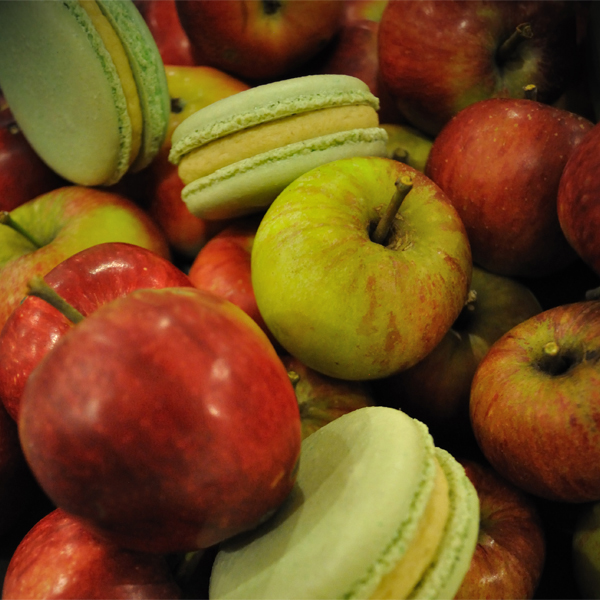
Our fig and plum trees have had a bad year this year, but the alternating wet / hot weather has really suited apples and blackberries in the garden. Our Granny Smith tree is yet to be picked, but I've brought in the first crop of a strange Pippin hybrid. We don't actually know what variety of apple it is - not super sweet, but not sour like a Cider apple. In any case, we have loads - far too many to eat out of hand.

One of the best things to do with too many apples (my parents' are currently picking about 100 a day in their garden) is to make Apple Butter. This is a slight misnomer, as it doesn't contain any butter or dairy ingredients - it's named after its smooth texture.
Apple Butter's origin lies in the Netherlands, and transferred to America where it's still popular - but is rarely found here in the UK. It's a great way to get 3 to 4 weeks life out of apples that would otherwise be wasted.
Uses are far reaching - have it on toast, with or without cheese. As part of your cheese course instead of quince paste. Add it to cocktails or ice cream ... or use it as an ingredient to make something else; in this case, Toffee Apple Macarons.
The recipes for both are below - you can make the apple butter with (as is traditional) or without spices; here I've opted for without so that it's more flexible as a cooking ingredient.
Apple Butter
Ingredients
- 1kg apples
- 100ml water
- 140g to 160g caster sugar
- 1 tbsp lemon juice
If adding a spice mix
- 1 star anise
- 2 tsp ground cassia bark or cinnamon
- 1/2 tsp ground cloves
- 1/2 tsp ground ginger
Equipment required
- Slow cooker
- Sieve
- Hand blender or food processor
- 700ml sterilised jar (Kilner style if possible - to sterilise your jar, upturn it in an empty dishwasher and perform a hot cycle without soap or tablet)

Wash the apples, then core but leave the skin on. Quarter them, and place in the bowl of your slow cooker with about 100ml of water. My slow cooker only has one setting (its primary use is for cooking rice) so just set it as high as it goes and close the lid. Cook the apples for 4 hours in total, stirring every 30 minutes to make sure nothing's catching and to help them break down.
By the end of the cooking time, the apples and their peel should be pretty much disintegrated into pulp. Transfer to a bowl, and use a hand blender to purée the apples as finely as you can. This may take 5 to 10 minutes. When happy, place your empty slow cooker bowl onto a weighing scale and zero it. Put a relatively fine sieve on top and pass your purée through the sieve into the slow cooker bowl (a bendable silicone bread scraper is useful here).
Weigh the purée - it should register somewhere between 700g and 800g. Now add the sugar - this is down to your taste preference, and also depends on how sweet your apples were to begin with. If they are a sweet variety, or you want a more tart butter, add 10g per 100g. Due to the slight sourness of our apples, I've gone for 20g for every 100g - so if you have 700g of puree, add 140g of sugar. It's personal preference; but the 20:100 ratio will give your butter a longer shelf life. Add the lemon juice (which also helps preserve the finished product) and, if using, stir in the spices.
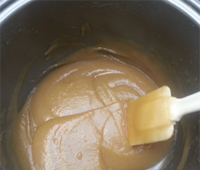
Put the slow cooker bowl back in the slow cooker, set as high as it goes again, close the lid and leave for a further hour - this time stirring every 15 minutes to prevent catching.
After the hour is over, transfer to a bowl to cool. If you've used star anise, don't forget to remove it now. Pour into your sterilised jar - from the 1kg of apples you're likely to fill a jar with a capacity of 700ml.
Store in the fridge - it should last 3 to 4 weeks.
Toffee Apple Macarons
Ingredients (makes 12)
For the macaron shells
- 150g Ground almonds
- 150g Icing sugar
- 110g Egg whites
- 150g Caster sugar
- 37ml Water
- 3g Green powdered food colouring (Americolor)
For the filling
- 100g Caster sugar
- 125g Unsalted butter
- 3 tbsp Apple butter
- Pinch of salt
Equipment required
- Food processor
- Stand mixer
- Thermometer
- 2 baking mats
- 2 heavy trays
- 2 disposable piping bags and 1cm nozzles
I use the Italian meringue technique by Pierre Hermé to make the shells - but everyone has their own tweaks to get consistent results at home.
Start by preparing everything - have your baking mats on some heavy trays, get out the piping bag and place the nozzle inside. Measure out the 150g of caster sugar and 37ml of water into a small pot and place on your stove top with a thermometer inside. Measure out 55g of your egg whites into the bowl of a stand mixer, and connect the whisk attachment
Now put the 150g of icing sugar in the bowl of a food processor, followed by the 150g of ground almonds (putting the sugar in first helps to stop it leaving the processor in a cloud of dust). Blend for a few minutes to make sure everything is as fine as possible. At this point, tip the mix into a new bowl (one big enough to fix this mix and the meringue later) and re-weigh to make sure you have exactly 300g of dry ingredients. Top up if necessary. Take the remaining 55g of egg white and place in a small bowl, then add the green food colouring and mix. If you can't find the powder colour, paste is the next best thing. Avoid liquid food colouring if you can, as they tend to dilute the mix too much. Pour this mix on top of your dry ingredients and set aside.
Start to heat your sugar / water mix in the pot over a high heat. Keep going until you hit around 112 deg C. Turn on your stand mixer to a medium high speed to get the whites whipping - remember not to go too mad with the speed at this point; you don't want stiff peaks nor soft ... somewhere in between is perfect. As the temperature of the sugar / water mix hits 118 deg C exactly, quickly remove from the heat, push up the mixer to high and slowly trickle the hot syrup onto the whipping egg whites in one smooth motion. Now leave the whites whipping until much cooler. If you raise the whisk and the meringue drips off quickly, don't despair - you've probably not left it mixing long enough, so just keep going until it comes away on the whisk and pretty much stays there.
Take a spatula and transfer all of the Italian meringue you've just made into the bowl with the dry ingredients you prepared earlier. Fold with the spatula until you get the desired consistency - to me, this is the crucial point where things can go wrong, and it's really hard to actually explain or even take a photo of the correct consistency. All I can say is that if you drop the mix from a spatula, and it doesn't re-absorb into the mix without trace in about 15-20 seconds, it needs more mixing. If it's more liquid than that, and just flies off the spatula, it's game over for you. Pierre describes it as "slightly runny cake dough". Make sure you get right to the bottom of the bowl though, or you may leave unmixed colour or ground almond at the bottom.
When ready, hold the piping bag and fold the top of it over your hand. Use the spatula to transfer the mix inside, then twist the top (put a kitchen clip on it if you like - I've lost mix many times by wandering aimlessly around the kitchen, not realising batter is dripping out behind me) cut off the end and get ready to pipe. I always have a bit if kitchen roll ready to clean the nozzle if too much mix clogs around it. This helps you pipe more perfect circles.
On the baking mats (and I would advise the Silpat-style ones over silicone, and both of those over just using greaseproof/baking paper - much easier to get them off later) pipe a row of 3.5cm rounds, keeping your nozzle as straight as possible. Keep about an inch between each round; you don't want to overcrowd the shells. Move to the next row, and pipe under the spaces you've left between the rounds on row 1. Carry on until you've filled the mat, then rap the baking tray on your work surface with relative force a couple of times. This helps to settle the batter, and is important not to forget. The French pros always do a little "whip" at the end of each pipe to stop the nipple effect (when a bit of the batter sticks up in the air), but in general I find these subside when you rap the trays. If not, you can use a wet finger to gently smoothen out any stray batter.
Repeat with the other mat so you have two full sheets. Turn your oven on to 140 deg c, set the sheets aside in the kitchen for 30 minutes to form a skin while you make the filling.
Weigh 25g of your unsalted butter onto a plate, put 3 tbsp of Apple Butter on a separate plate, and put both next to your stove top. Place the 100g of sugar into a heavy-bottomed pot. Never use a non-stick or black-coloured pot to make caramel! Use a medium heat to melt the sugar, and keep going until it becomes an amber colour with a hint of smoke emanating from the pot. As soon as it hits this point, immediately slide in the butter and use a spatula to constantly stir the caramel - it will bubble up, so be careful; sugar will burn you badly at this temperature. When the butter has been incorporated, drop in the Apple Butter and mix again. Pour the mix into a separate bowl and allow to cool.
Take the remaining 100g of butter, and put the beater attachment on your stand mixer. Beat the butter until it's completely smooth, which can take only 30 seconds on a high speed. Make sure you don't over-churn the butter though. When the caramel mix is cool, put the mixer on a medium low speed, and start to mix it into the butter a tablespoon at a time. You may not need all of the mix, or you may need the lot - as it blends in the mixer, look for a "whipped" consistency and taste it as you go to make sure you're happy with the flavour. When ready, transfer to another piping bag, twist or clip and place in the fridge to slightly firm up.
By now your oven should be hot, and the 30 minutes up. To test the shells, gently touch your finger on one; you should find that the skin has formed and won't leave batter on your finger. Place the trays in the oven, and set two timers going - one for 15 minutes, the other for 5. When 5 minutes are up, quickly open and close the oven door to release any steam build up. You'll be able to have a sneaky look at your macs at this point - you'll probably see the foot has already started to form. Don't leave it open long though, and re-set the timer for another 5 minutes. Repeat at the 10 minute mark then, after 15 minutes are over, test one of the macaron by seeing if it will come away from the baking mat. It won't just fall off, you need to slightly twist it. If there's any bend do it, leave it; they aren't ready. Carry on cooking for another 2 minutes and try again. You don't want to overcook your macaron, or you'll get a burnt colour and solid insides - so just repeat in 2 minute intervals until you can pull off one of the shells. When happy, remove from the oven. If you've got it slightly wrong, the shells will start to darken after about a minute out of the oven; this is caused by an undercooked inside - all is not lost; turn off the oven, and place the trays back inside with the door slightly open. This will gently cook the insides. Check them every minute - if all looks well, remove from the oven and allow to cool slightly on the mats.
What you're going for is a nice smooth base, raised foot and a soft slightly chewy inside. Obviously you can't check that last bit without eating one - though if you've piped an odd number of shells, you can always bite into one to test.
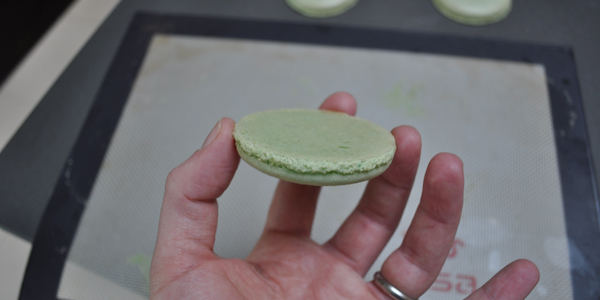
Peel each shell off and place on a cooling tray; if any get stuck, use a small spatula to slowly work around the foot, then under the shell to release it. If you're really good at piping, then all of the shells will be the same size. I never get it perfectly, so at this point will match up pairs of shells that are actually the exact same size. We're now ready to pipe - so take the filling out of the fridge and cut off the top of the bag. If the mix is too solid, leave until it's pipe-able. Squeeze a generous amount into the upturned centre of one of the shells, then place the other half your the pair on top, and press down gently until the filling starts to reach the sides. Repeat with all remaining shells and filling.
Now the really hard part - not eating them. Put the finished macaron into a box with a lid, and place into your fridge. After a few hours, they'll taste much better than when you first made them. Leave for at least 24 hours, and you'll get the best flavour and texture.









